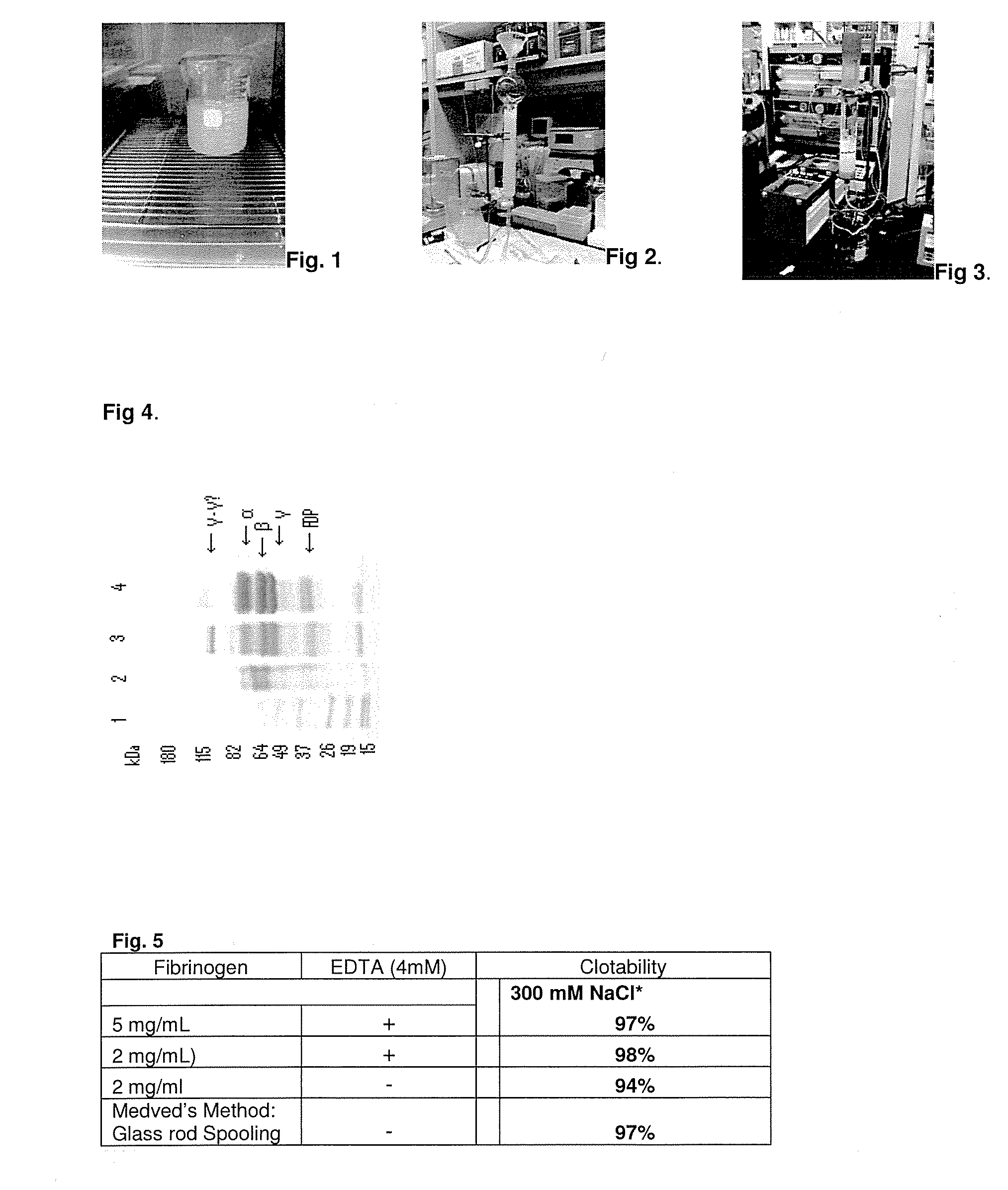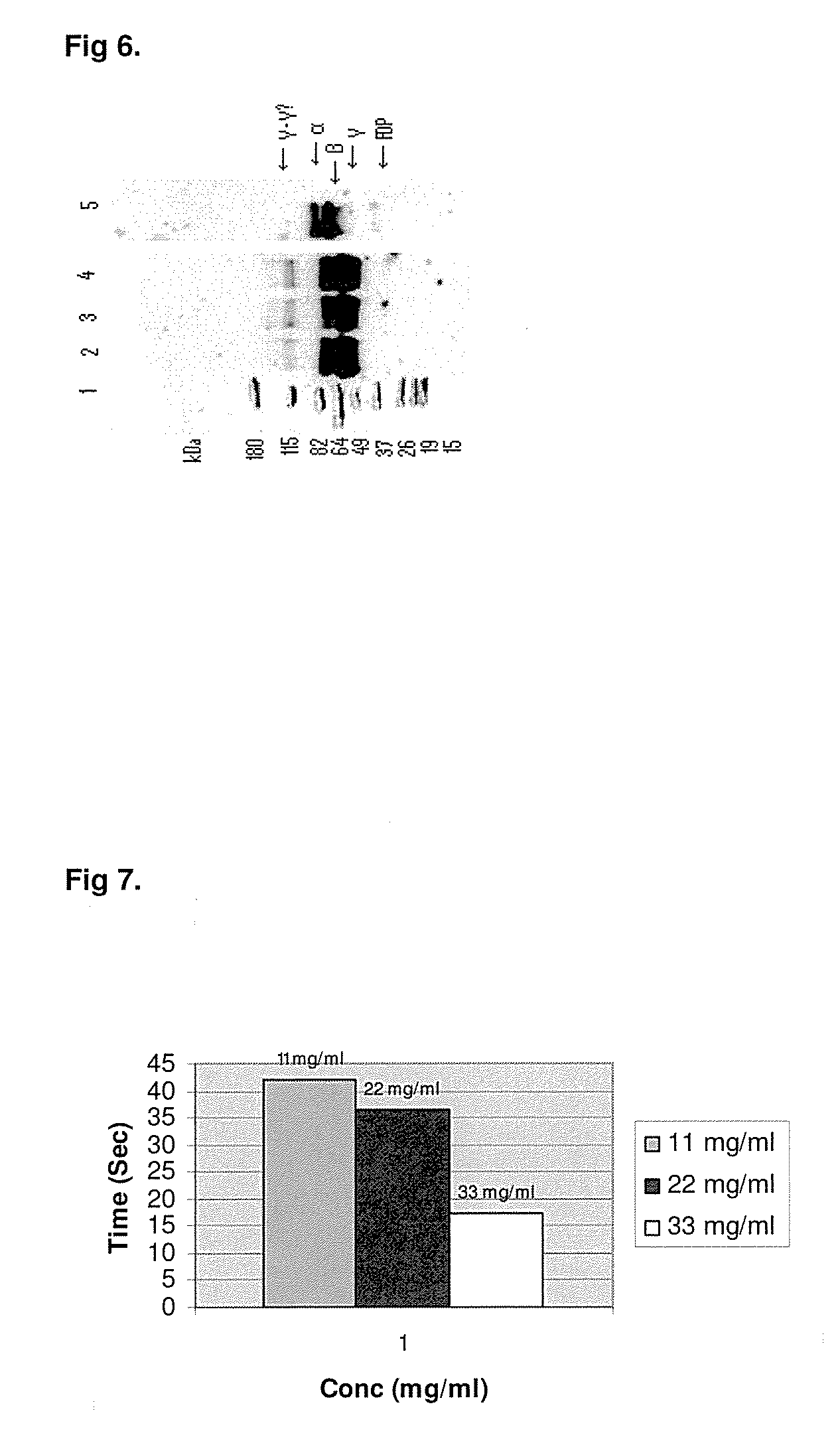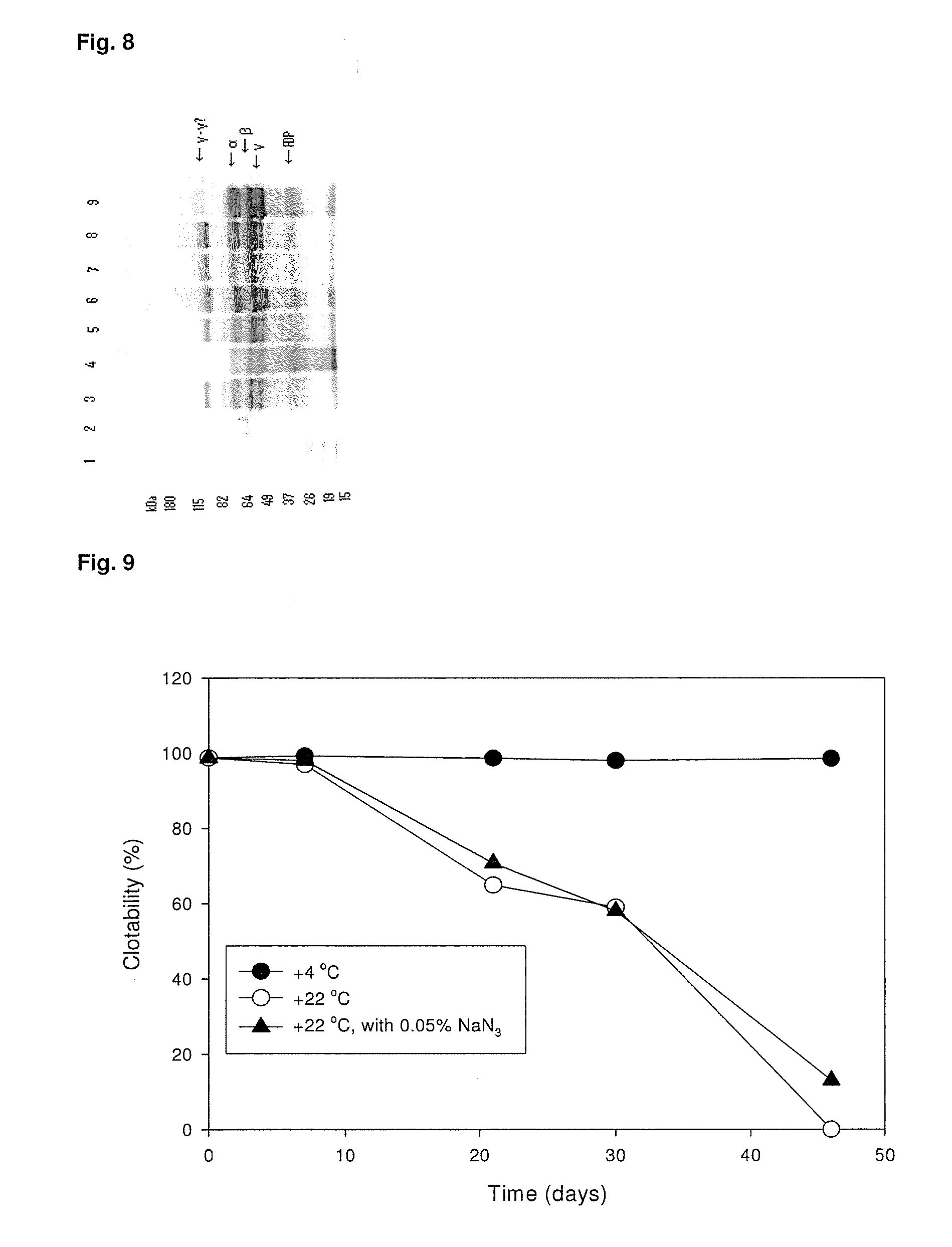Method to produce fibrin monomer in acid media for use as tissue sealant
a technology of fibrin monomer and acid media, which is applied in the direction of immunoglobulins, peptides/protein ingredients, peptides, etc., can solve the problems of fibrinogen degraded, autoimmune reactions, and limiting the activity and shelf life of components, so as to reduce the risk of immunological reactions
- Summary
- Abstract
- Description
- Claims
- Application Information
AI Technical Summary
Benefits of technology
Problems solved by technology
Method used
Image
Examples
examples
1. Determination of Yields, Clotability and Formation of Covalent Bonds Following Polymerization
Determination of Fibrin Monomer Composition:
[0049]The fibrin monomer obtained by above methods were analyzed by SDS-PAGE and stained with Imperial Protein Stain (cat #24615, ThermoScientific) followed by Western Blot method. Immunoblots were developed by exposure to polyclonal sheep anti-Human Fibrinogen (Fg) affinity purified peroxidase conjugated antibody (Cat #: SAFG-APHRP, Enzyme Research Laboratory, IN) (1:40K) and compared with the authentic sample of Fibrin monomer obtained by the method of Medved et al (unpublished results?)$ and also starting material Fibrinogen. The α, β, γ polypeptide chains of Fibrin monomer were at the same KDa level as the authentic sample and however at slightly lower KDa in comparison of Fibrinogen as expected. (FIG. 4)
Clottability
[0050]To 500 uL of 2 mg / ml Fibrin solution in AcOH (pH˜3.4) with measured absorption at 280 nm , 500 uL of 1 M HEPES buffer wit...
PUM
| Property | Measurement | Unit |
|---|---|---|
| concentration | aaaaa | aaaaa |
| concentration | aaaaa | aaaaa |
| temperature | aaaaa | aaaaa |
Abstract
Description
Claims
Application Information
 Login to View More
Login to View More - R&D
- Intellectual Property
- Life Sciences
- Materials
- Tech Scout
- Unparalleled Data Quality
- Higher Quality Content
- 60% Fewer Hallucinations
Browse by: Latest US Patents, China's latest patents, Technical Efficacy Thesaurus, Application Domain, Technology Topic, Popular Technical Reports.
© 2025 PatSnap. All rights reserved.Legal|Privacy policy|Modern Slavery Act Transparency Statement|Sitemap|About US| Contact US: help@patsnap.com



